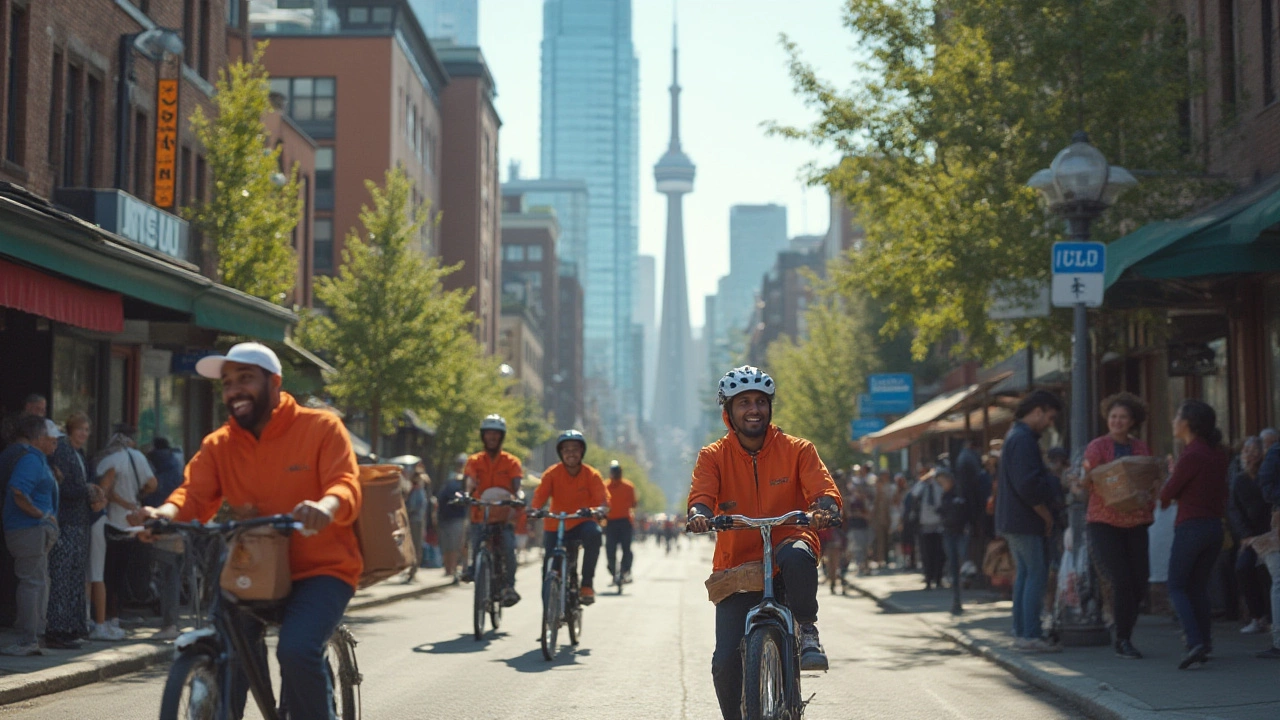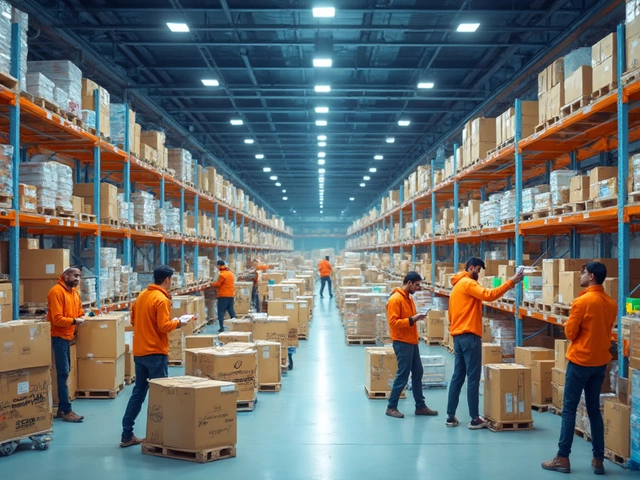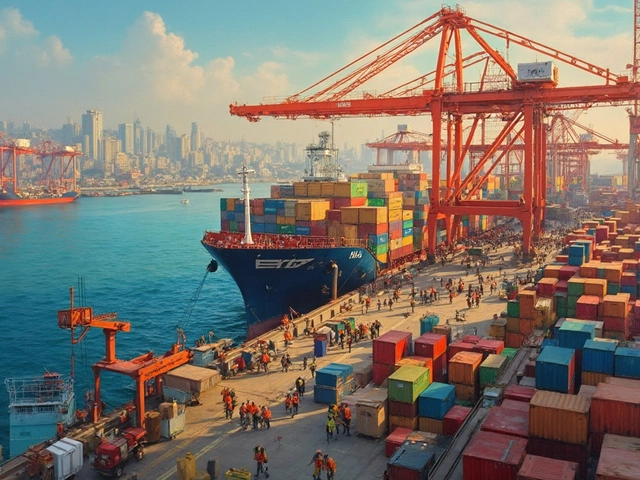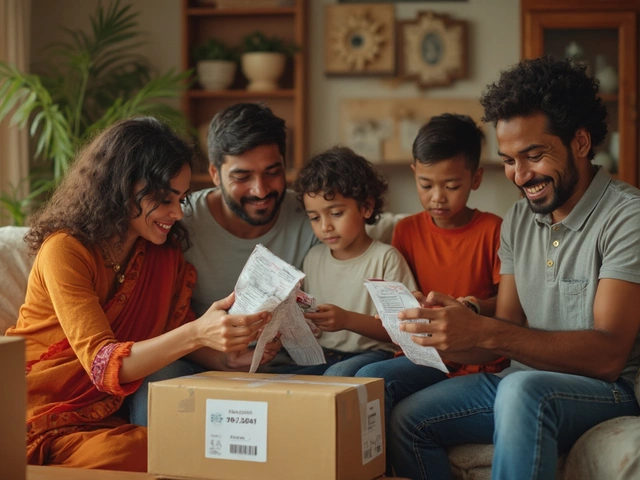Ever been stuck waiting for a package, eyeing your phone, wondering what “local courier” actually means in real terms? I get the suspense. People hear “local courier” and often picture some random guy zooming through traffic with a backpack, but there’s more going on than that. Let’s break down what local couriers really are, why the whole local thing matters, and how their services stack up against those global delivery giants we all know. I’ve seen how Toronto hustles—trust me, local courier services are the secret sauce powering a lot more than you think.
What Is a Local Courier, Really?
When you hear ‘local courier,’ you might imagine a bike messenger weaving through city cars, but those are just one slice of the pie. Local couriers are delivery companies that focus on moving packages or documents within a specific city, region, or metropolitan area. Unlike FedEx or UPS, who bounce stuff around the world, a local courier team usually sticks close to home. Here in Toronto, I see branded vans, electric cargo bikes dodging streetcars, and even a few pickups fitted with insulated boxes—you name it. Every trip they make is a short hop, not a trek across provinces or continents.
Here’s the kicker: local couriers are built for speed and flexibility. They’re the folks who get the job done when you need something picked up from Queen Street and dropped off in Scarborough within an hour. It isn’t just businesses using them—plenty of regular people book these services when they need to deliver a birthday cake, flowers, or their dog Luna’s prescription (yes, I’ve done that). Local courier businesses usually offer same-day, two-hour, or sometimes even “next-flash” delivery for super-urgent needs. They’re not bogged down by customs checkpoints or long haul flights, so they can pull off fast turnaround times, handling rush jobs that big box services simply can’t.
These couriers use everything from bikes to cars, vans, and for the eco-minded, even electric scooters. Their offices are often tucked into warehouse corners, nondescript industrial parks, or the backrooms of downtown shops—places regular folks never see. But their reach is huge. Some local courier companies operate 24/7, which is handy during emergencies or for night-owl businesses like Toronto’s 24-hour print shops and bakeries.
One cool fact: Toronto alone has well over 80 registered courier businesses operating just within city limits, according to 2025 numbers from the Ontario Chamber of Commerce. That doesn’t count freelancers or app-based bike couriers working solo. Many local firms have invested heavy in tech—real-time tracking apps, streamlined online booking, SMS alerts, and performance dashboards for business clients.
So, what’s the purpose? Local couriers fill gaps that the big national or international players miss. They specialize in routes and options tailored to neighbourhoods and rush hour realities—knowing traffic patterns, the best loading zones, and friendly receptionists in office towers. Local courier companies can turn a stressful delivery into a smooth ride, keeping everything tight and efficient, so you aren’t left watching the clock and sweating bullets over a lost package.

What Services Do Local Couriers Offer?
Local courier services are way more than just zipping an envelope across town. They handle an impressive variety of deliveries, including items that can’t ride along with regular mail. To show how diverse these services really are, here’s a breakdown with real-use examples:
- Same-day and rush delivery: Your go-to when you need a contract delivered across town, stat. Toronto agencies often guarantee same-day arrivals before 5pm if you book by noon, and they’ll even rush orders in under two hours, for a fee.
- Medical and pharmaceutical delivery: Chronic migraine? Same-day medication refill is pretty much a lifesaver. Dentists, pharmacies, and hospitals lean hard on couriers for urgent samples and equipment, especially when the items are temperature-sensitive or high-value. One Toronto provider runs a fleet of insulated mini-vans just for this niche.
- Grocery and food delivery: Not just Uber Eats—local couriers work with boutique grocery stores, bakeries, and catering companies, especially for larger orders or events where freshness and timing matter.
- Document and legal delivery: Think of law firms needing to hand off court filings on deadline. A 2023 survey showed that 67% of Toronto law offices use local couriers for this purpose, citing speed and reliability.
- Retail and e-commerce deliveries: The pandemic flipped the script—people want things fast, but also local. Many small shops now tie local courier services straight into their online checkout to get products to your door the same day, skipping national shipping delays. Etsy and Shopify sellers say it’s a game-changer for boosting local sales.
- Multidrop runs and scheduled routes: Businesses like florists or dry cleaners may schedule regular pick-ups and drop-offs, sometimes hitting several spots in one go. It saves their staff time and nails delivery windows.
Some local courier services also offer special extras, like proof-of-delivery photos, signature-on-arrival, OTP codes for verified drop-off, or protected overnight storage if a recipient isn’t home. I’ve even spotted couriers wearing bodycams for extra security when hauling valuable items.
One of the less talked-about strengths? Bulk discounts. Say you’re a business regularly sending out more than ten packages a week in Toronto. Many local courier companies set up custom rates and dedicated account managers, which means you’re not paying the same as someone sending a single urgent birthday card.
Security and dependability rank high for local couriers, too. Since the area they cover is small, package mishaps and losses stay minimal—usually under 0.1% of shipments, based on 2024 data from the Canadian Courier and Logistics Association. Compare that to international shipping, where issues multiply with every extra stop.
Here’s a table showing interesting stats comparing local vs. national courier performance, gathered from Toronto’s logistics scene last year:
| Service Aspect | Local Courier | National Courier |
|---|---|---|
| Average Delivery Time (within city) | 2-5 hours | 8-24 hours |
| Loss/Damage Rate | 0.1% | 0.6% |
| Real-time Tracking | Yes (95% coverage) | Yes (70% coverage) |
| Delivery Method Variety | Bikes, Cars, Vans, Eco Options | Mostly Vans or Trucks |
| Rush/Urgent Delivery | Within 1–2 hours | Not always available |
You get the idea—when you need something handled locally, going with local couriers can pay off, especially for speed, customer service, and reliability. And it might even shrink your carbon footprint, since more are rolling out electric vehicles and pedal-powered options. Some local companies even report that 35% of their fleet is now electric or hybrid—big leaps happening after Toronto’s Clean Energy by 2030 push.
Curious about savings? Local couriers may charge a flat fee starting around $12 for citywide same-day delivery, while big players can go double that, especially during peak hours or with awkward addresses. And if you own a pet, some even offer “pet-safe” delivery time slots—my Luna’s dog food has shown up during specific afternoon windows, so she isn’t left waiting at the door and howling half the day.

How to Choose and Use a Local Courier Service
With dozens of companies vying for business in cities like Toronto, picking the right local courier can feel tricky. But once you know what to look for, the choice is clearer. First, check for genuine experience in your city. Years on the road matter—you want people who know which intersections always jam up (looking at you, Bay & King), when the elevators at a given office tower break, and how to skirt festival road closures. Word-of-mouth counts, so ask coworkers or check reputable review platforms—recent customer experiences reveal a lot.
Pain point number one for most folks? Reliability. Insist on couriers offering real-time package tracking. Some apps update every five minutes, showing the driver’s location, package status, and even a direct contact option. Next, see if there’s insurance coverage for lost or damaged orders—top providers clearly post their policies on their sites, while shadier operations hide details in fine print.
Customer service is another dealbreaker. Responsive local courier companies are quick to pick up the phone, answer emails, and handle hiccups—whether it’s a delayed parcel or a misrouted delivery. Ask about their average resolution time; the best aim to resolve issues within two hours (based on 2024 feedback data).
For businesses, tech integration is a big plus. Modern local couriers offer plug-ins for Shopify, WooCommerce, or custom e-commerce sites, and provide regular reporting if you ship in bulk. Some automate pickup scheduling for repeat customers—one less thing for you to remember before your morning coffee.
Looking to save money? Ask about discount tiers—some couriers slice rates by 10-20% for businesses doing weekly multiple shipments. Occasional senders should watch for seasonal promo codes, often dropped around holidays when delivery volume spikes.
And don’t skip the environmental piece. Want to keep your delivery green? Check if your courier allows you to choose “eco” routes—using bikes, e-vans, or grouping drop-offs to cut emissions. Local couriers in Toronto report that by using bikes for up to 40% of core downtown deliveries, they’ve slashed their greenhouse gas footprint compared to 2019 levels, according to official city sustainability reports.
Need to send something special or unusual? Give your courier a heads-up about odd-shaped or fragile items—many offer custom packing or secure hand-off. And don’t forget to label your package clearly and double-check recipient info—it’s the number one reason packages bounce back!
Here are quick steps for using a local courier effectively:
- Book online or call with clear sender and recipient info.
- Choose your delivery speed: standard, rush, or scheduled.
- Mention any special instructions (fragile, access codes, times, or “furry recipient”—kidding, sort of).
- Track the delivery using their app or website.
- Request proof-of-delivery or signature if needed.
- Follow up for feedback (and leave a review if it rocks!).
The key takeaway? The local courier industry has evolved fast, feeding off our demand for instant, close-to-home service. The next time you see a package zip by with “local delivery” stamped on the label, you’ll know that a whole efficient, tech-powered, and surprisingly personal system is moving behind the scenes to get your stuff exactly where it’s needed, without the wait or the international detours. Next birthday, last-minute project, or urgent errand? You’ve got pros just down the street ready to help. Might save you a world of stress—and maybe even your pet’s dinner.





